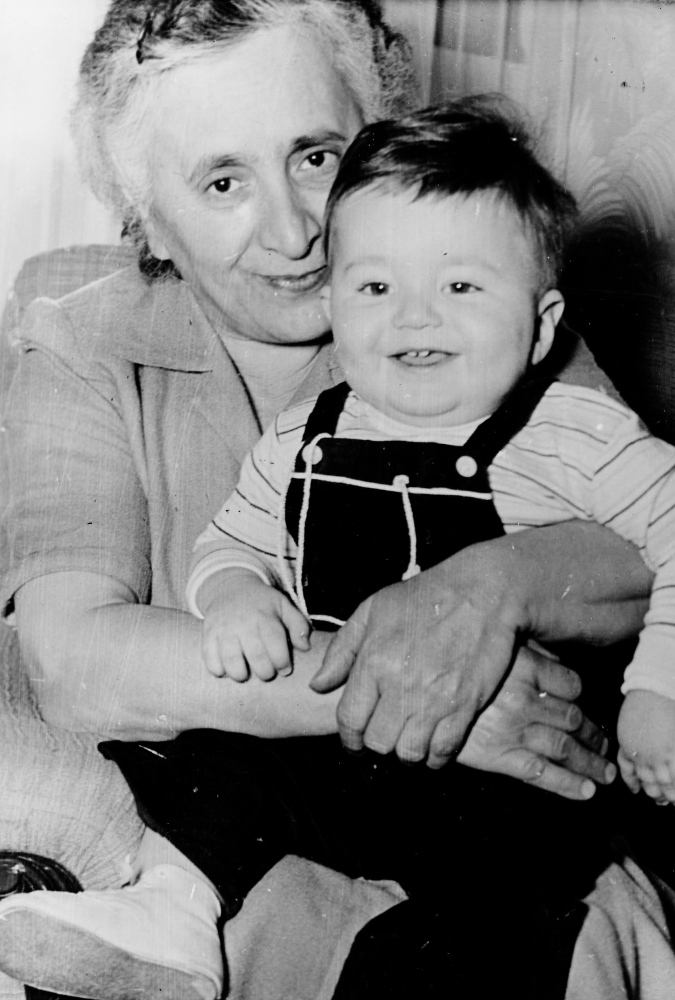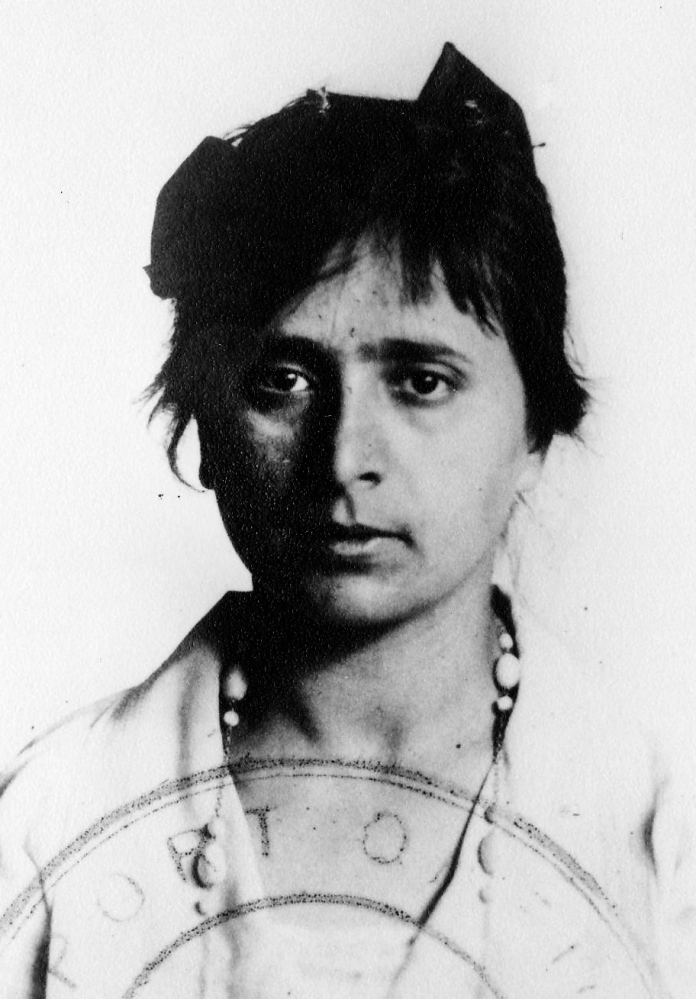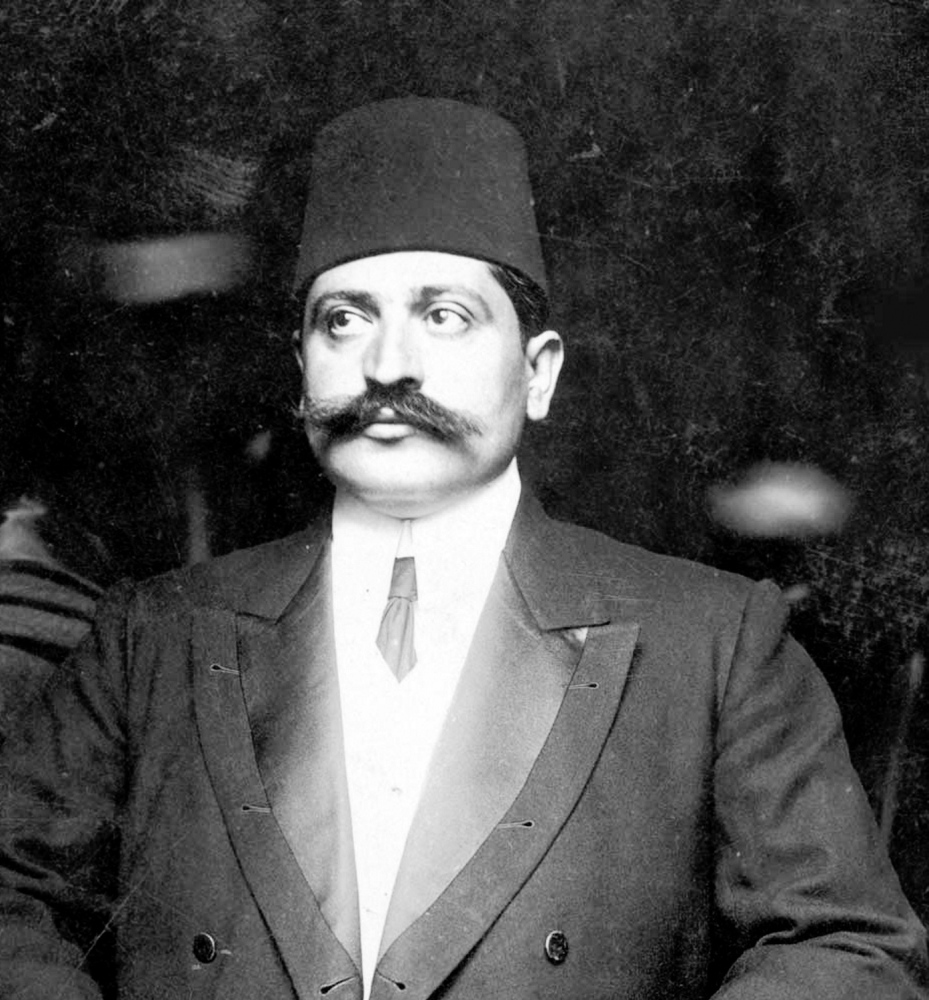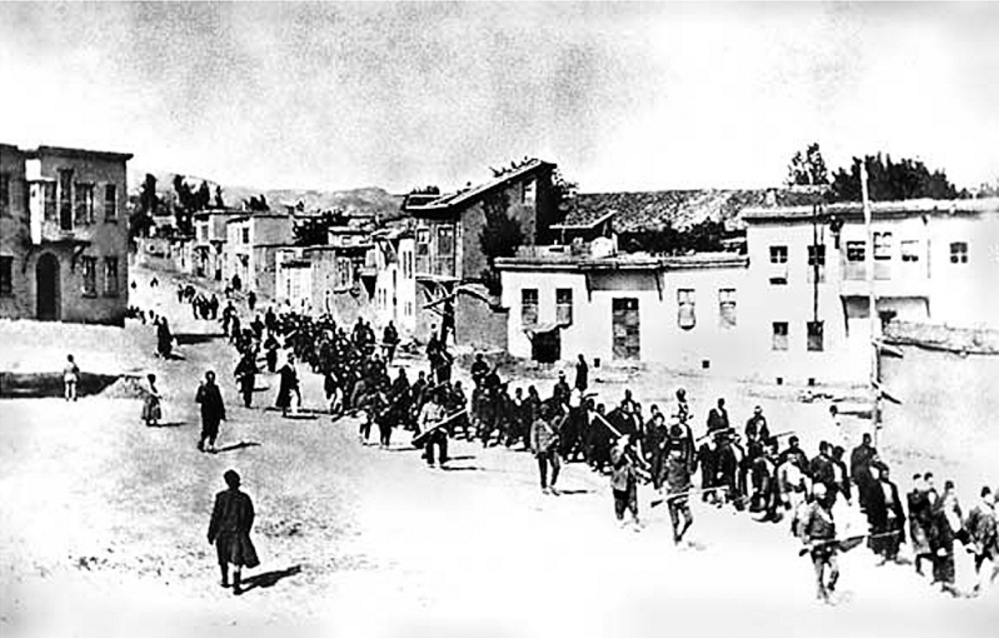On a spring day in 1909, in a hill town swept by the breezes of the eastern Mediterranean Sea, a 10-year-girl was sent to her family’s pasture to round up their cows.
She was Gulenia Hovsepian, a little Armenian girl living just outside the Turkish village of Suediya. In English, her name means Rose.
She finished her chore and started back up the hill to her home, running through the mulberry trees her father grew to feed the family’s silkworms.
“And I was coming back to the mulberry trees and the mulberry trees were tapping my face, and I was running, and I was a kid and hadn’t eaten yet, nothing,” she recalled in a recording she made at age 91. “A boy, a Turkish boy, by the neighbors, hollers to me, I never forget it, never could forget it. In Turkish he said, ‘They’re killing the giaour, the kafir.’ ”
‘They” were the Turks. The Armenians were the giaour, the kafir – the infidels.
What history records as the Adana massacre was beginning through a region of Turkey that was Cilician Armenia 1,000 years before and was still the home of tens of thousands of Armenians.
“Adana was the turning point for the Armenians,” wrote Peter Balakian in “The Burning Tigris,” his much-praised history of the Armenian Genocide. “The massacres there were another major step in the devaluation of this minority culture, and a step forward on the road to genocide.”
Balakian cites a report that 15,000 to 25,000 people were killed in the massacres, including children and teachers in a school that was set afire. Those that didn’t die in the fire were shot as they tried to escape.
The Armenian Genocide – one of the earlier recorded genocides – began 100 years ago this year throughout Ottoman Turkey. Armenians all over the world – including half a million in the U.S. – will be commemorating the anniversary in 2015, especially on Remembrance Day, April 24.
The massacres of the 1890s and 1900s and the genocide stemmed from a longstanding hatred and resentment of the Christian Armenians (Armenia was the first nation to declare itself Christian, in 301 A.D.) by the Muslim majority, and the rise of Turkish nationalism and militarism.
Under the leadership of the minister of the interior, Talaat Pasha, Turkey passed laws to forcibly deport Armenians and confiscate their homes and property. Then they were marched across deserts, where many starved to death. Others were outright murdered: shot, bayoneted, burned to death in barns, driven over cliffs, crucified and flayed. Woman were raped or forced to marry ethnic Turks.
The U.S. ambassador to Turkey at the time was Henry Morgenthau, a tireless advocate for what became in the U.S. a catchphrase: “the starving Armenians.” In a letter to the secretary of state in July 1915, Morgenthau describes what was happening in Turkey:
The “deportation and excesses against peaceful Armenians is increasing and from harrowing reports of eye witnesses it appears that a campaign of race extermination is in progress …”
Except for those few Turks who were assassinated in the 1920s by Armenian rebels, no one has ever been held responsible for the Armenian “Race Murder,” the title of the first chapter in Samantha Power’s groundbreaking history of genocide, “A Problem from Hell.”
In 1939, during of the Nazi genocide of European Jews, Adolf Hitler expressed confidence he could get away with anything: “Who today, after all, speaks of the annihilation of the Armenians?”
Now, 75 years after Hitler’s dismissal, the world has not forgotten, especially those like myself who grew up with a victim of the Turkish atrocities.
In 1948, that little girl who ran through the mulberry trees became my grandmother, Rose Hovsepian Banaian – my Nana. Until I was 12 years old, we lived in the same tenement: she and her unmarried children in the end unit; my mother (her oldest daughter), and my Irish father, my brother and I in the middle tenement on a dead end street in Dover, New Hampshire.
I knew from talks around family dinners, especially the Sunday picnics, that Nana was a refugee from the genocide; I knew her father and mother had died at Turkish hands; and I knew she escaped through Egypt and came to the U.S. as the arranged bride of an Armenian man who had also escaped the genocide.
I say I knew this, but I had never written anything down, nor asked for precise details.
My search for Nana’s story – and my story – brought me to a 1990 recording of Nana that begins in that Turkish pasture so many years ago.
‘I SAW MY FATHER RUNNING’
Nana raced home on that day 81 years ago and 5000 miles away from where she would make her American life.
“I saw my father running. He had his rifle, his sword, his pistol … he hugged me and he kissed me but he didn’t say nuthin’. But he was running, he ran into that brook, to follow the brook.”
He was headed to the village center to join other Armenian men to resist the Turks. He never made it.
Nana begins to tell what happened next: “Before he get there, on the hill he met a …” and her voice just stops. Nothing for seconds. Then: “All I’ll say is, hundreds of them. He was killed. He was beaten. Because he couldn’t fight all those people. He tried, he did. They had taken everything off him, only his white shirt, homespun white shirt that goes way down to the knee. It’s all homespun, rough stuff, and left him there. Left him there.”
From that day in 1909 until she arrived at Ellis Island in 1921 and married John Banaian, Gulenia Hovsepian was taken out of her simple farm life and tossed onto the world stage, one of the millions of victims in the shattering events that culminated in World War I.
HIDING FROM THE TURKS
While her recollections at age 91 sometimes wandered across time periods and left some crucial storylines incomplete, her gift for the telling detail and the turning-point event is novelistic.
After her father was killed, the family – mother Marian and her five children, from 10-month-old Movses to Sara, 13 – had to escape. They made their way to the nearby factory where silk was woven, where the owner agreed to hide them from the Turks.
“They locked the door in there, and we heard the soldiers going by because it was on the main road and the baby started to cry and my mother would put her hand on his mouth (so) they won’t hear” her, Nana recalled.
They made their way to Antioch, where they were to be spared by becoming – as Nana puts it – “Mohammedan.” In the massacres and later in the genocide, conversion was sometimes offered as a way to avoid deportation and possible death.
But before that could happen, the official killings stopped. Nana recalled: The sultan “had given orders for the town criers to go around – it’s not like papers now – town criers to go around in the town, in the city, and they holler and yell, ‘Stop it, don’t kill no more.’ ”
Still, the family had lost their home, their source of income, their very world.
Nana’s hopes were with her Uncle George, who she believed was well off and working for an Englishman in a cigarette factory in Cairo.
George had received word that his brother had been killed and his family members were refugees. He arrived in Antioch and organized a rescue of Nana and 45 other Armenian girls, including Nana’s younger sister, Violet.
“We get all gathered, they had to take us in the dark to the missionary … My mother bathe me and comb my hair and she took a little piece of cloth and put in there cucumbers and some kind of bread they make of it, a lot of sesame seeds on it. She put that in there for the two of us to eat. And when we get to Alexandretta (on the Turkish coast) in a building, an empty building in there, and at midnight, they took us out, but they served a meal there.
“All of a sudden, they came around: Get your bundle, what you have with you. They were going to transfer us somewhere else. You know what happened? We heard the story afterward. The Turks had take, you know the gasoline, kerosene, I mean, comes in cans, in tin cans like that, because we had to buy it ourselves for our home. They did it all around the building. They were gonna put it on fire there. And someone found out about it so they had to take us. Yeah, they were gonna burn us all to death.”
The children were taken by ship to Beirut, where a German Lutheran orphanage and school agreed to accept them. Nana stayed from age 10 to age 16 in 1918, relatively safe from both the war and the genocide that was killing hundreds of thousands of Armenians in neighboring Turkey.
‘IT MADE MY HEART IN PIECES’
Her mother, though, was not as fortunate. Every time the subject of her mother comes up on the 1990 recording, Nana answers quickly – “My mother died on the road” – and then changes the subject.
Historically, that makes sense. Even though Nana’s mother escaped the Adana massacre, she was a refugee and without resources when the 1915 genocide began. “Died on the road” could well refer to the most common way Armenians were killed – by starvation and disease on forced marches to concentration camps.
Movses, the youngest child, lived with sister Sarah and the man she had married, in Antioch, but there was little food to feed the family. Movses had only grass to eat and died, likely from severe diarrhea or dysentery, Nana said.
“He died, starved to death three weeks before the armistice was signed. The armistice was signed, they had PLENTY, PLENTY FOOD, the Red Cross (she halts, sobs). He was about … 10 years old. He died. I’m never going to forgive anyone for that. Never! Never! It broke my heart, made my heart in pieces.”
A friend from the Beirut orphanage was working as a nurse’s aide in a Cairo hospital, and helped Nana get a job there, where she stayed for two years. Then, through a friend, the two got an offer to marry Armenians who were living in America: “She had somebody that she knew, she asked her how about bring two girls, there are two brothers here, they like to marry Armenian girls. They say, they’re pretty well off, they got money, see.”
On Aug. 9, 1921, Nana and her friend boarded a train to Alexandria, then a ship to Piraeus, Greece, and the King Alexander ocean liner to Ellis Island, where she arrived just before Labor Day.
“I wanted to see America. I wasn’t only interested in see a man, or anything. I wanted to see America.”
It turns out, John Banaian, who was to be my grandfather, had no money and lived in a shabby apartment with dish towels for curtains in the worst section of Dover. But he was a typical immigrant – industrious and frugal. Later, he bought the tenement house and they had six children in seven and a half years. The youngest, Lillian, was but 10 months old when John Banaian died of pneumonia.
Nana was left with three boys and three girls; the oldest, my mother, was 10. It was in the middle of the Depression. My mother became the daytime mother while Nana went to work in the mills.
After World War II, my mother – who went by “Kay” rather than the decidedly immigrant first name she was given, Kouharig – met and married a local Irishman, Thomas Christie. I was born in 1948, the first grandchild on my mother’s side.
AN ANTIDOTE TO HARDSHIP
The lives of my mother and her mother – my Nana – were forged from hardship and loss.
When I came along life was a little better. The American economy was strong after the war: Dad, a World War II veteran, became a skilled machinist; Mom worked the late shift at a nearby GE plant.
There were no luxuries, but my extended, deprived family made my life as easy, as all-American, as they could. Perhaps in response to their lives, mine was to be protected.
I was to be the antidote to their past, yet the family history seeped into my consciousness, awaiting a deeper exploration of the past opened up by Nana’s recording.
Now, it takes but a plate of grape leaves I make from Nana’s recipe, and I can see her running through those mulberry trees while her father – my great-grandfather – grabs his rifle and runs directly into his murder. In that moment he enters the history of a people, the history of a world soon afire, the history of one of mankind’s worst inventions: genocide.
On the recording, Nana, who died five years later at age 96, strays from the narrative of her life to reflect upon history and the fact that the Turkish government to this day officially denies the Armenian Genocide:
“I don’t know if the Turks would ever. But, ah, they’re denying it. I’m sorry to damn them – they don’t want to admit it. I’m telling you this: Where did I come from? Where did I get the story to tell you about it?”
John Christie is a journalist living in Maine and writing a memoir, “The Regretful Boy Scout.”
Send questions/comments to the editors.






Comments are no longer available on this story